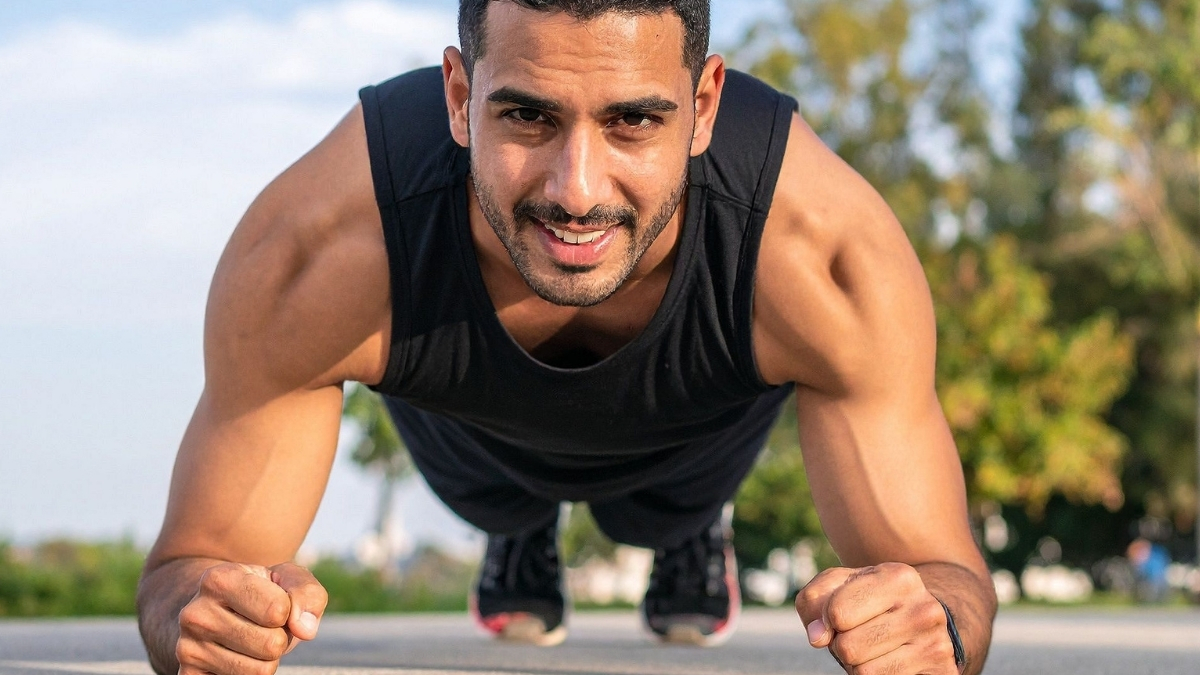Did you know that neurotransmitters such as dopamine, serotonin, oxytocin, and endorphins, often referred to as “happy hormones,” are pivotal in regulating mood and promoting well-being? Understanding how to boost these feel-good hormones through various exercises can play a significant role in stress reduction and mood enhancement.
This article delves into the science behind happy hormones and outlines five effective physical activities designed to increase happy hormones in the body. Readers will learn methods to release and manage stress hormones responding to the perennial question: ‘how to boost happy hormones’ and achieve exercise-induced euphoria.
The Science of Happy Hormones
:max_bytes(150000):strip_icc()/VWM-happy-hormones-B-8270ca14723542aa970f3062b31b0b41.jpg)
Engaging in regular physical activity is a potent catalyst for the release of endorphins, the body’s innate mood enhancers and pain relievers, which are responsible for the euphoric “runner’s high” and diminished pain perception. These exercises, whether aerobic or anaerobic, also stimulate the production of endocannabinoids, contributing to short-term psychological benefits such as reduced anxiety and a sense of tranquility. Moreover, exercise serves as a buffer to the brain’s stress response, enhancing cognitive performance, safeguarding against mental decline, and fostering hippocampal growth, which is crucial for memory and learning.
Yoga, a practice of mindful movement, stands out for its ability to harmonize stress hormones and elevate endorphins, thereby mitigating stress and anxiety. It not only lowers cortisol levels, which induces relaxation, but also boosts mood by increasing brain GABA levels. Additionally, yoga elevates serotonin, the “happy neurotransmitter,” and fosters emotional resilience, self-awareness, and self-connection, paving the way for self-love and acceptance. Its benefits extend to reducing anxiety in PTSD sufferers and alleviating OCD symptoms.
Strength training, another key exercise, triggers an increase in endorphins and serotonin, neurotransmitters that regulate mood, appetite, sleep, and pain perception. Animal studies reveal that a single session can amplify serotonin receptor expression in the brain, while human studies confirm enhanced serotonin and endorphin levels post-exercise. The lactate produced during strength training can also stimulate the synthesis of these neurotransmitters in the brain. Regular engagement in strength training promotes neuroplasticity, boosts cerebral blood flow, and reduces the risk of cognitive decline.
Read: What is Silent Walking: A Mindful Journey to Inner Peace
Running or Jogging

Regular physical activity like running or jogging is a powerful tool for enhancing mental health and triggering the release of happy hormones. Here’s how incorporating running into your routine can lead to a happier, healthier you:
- Improved Sleep: Regular runners often experience better sleep quality, which is crucial for managing mood disorders such as depression and anxiety. By establishing a normal sleep schedule, running helps to ensure the brain and body are well-rested, contributing to overall mental wellbeing.
- Enhanced Self-Esteem: As physical fitness and appearance improve through consistent running or jogging, individuals often see a boost in self-esteem and confidence. This positive self-image is a key factor in elevating mood and increasing life satisfaction.
- Increased Energy and Reduced Fatigue: Running can invigorate your energy levels, helping to combat fatigue. This surge in vitality can lead to an uplifted mood and a more positive outlook on life.
Running also offers the opportunity for social interaction and community building, which are integral to emotional health. Joining a running group or club provides a sense of belonging and support, fostering happiness and wellbeing. Additionally, running outdoors can further enhance these benefits by reducing feelings of loneliness, stress, and helping with depression and anxiety.
Lastly, regular aerobic exercise like running is known to improve mental health by reducing stress, boosting mood, and enhancing brain function. It can even create new brain cells, which may lead to improved cognitive performance. Whether you’re looking to manage stress, boost your mood, or simply enjoy the myriad of health benefits, running is a simple yet effective exercise to incorporate into your life for a happier, healthier you.
Yoga and Mindful Movement

Yoga’s mindful concentration taps into the brain’s potential, enhancing attention, memory, and processing speed. This practice stimulates various brain regions, fostering neural connections that bolster learning, memory, and the brain’s defense against stress and aging. Here’s how yoga contributes to cognitive health and happiness:
- Cognitive Resilience: Yoga’s effect on the brain slows down the natural aging process by preserving brain volume in key areas involved in processing and memory storage.
- Sleep and Focus: Those who practice yoga often report better sleep quality and increased focus, leading to improved overall cognitive function.
- Cross-Cultural Movement: Across cultures, certain movements are universally associated with happiness. Expansive yoga poses, for instance, have been found to make participants feel more powerful compared to restrictive poses.
- Qi Gong: Similar to yoga, Qi Gong is a Chinese system of movements that supports mental health by promoting the flow of energy throughout the body.
- Mind-Body Connection: Integrating meditation with physical stretches is part of a larger fitness trend focused on enhancing overall wellness beyond just the physical appearance.
By incorporating yoga into one’s routine, individuals can manage stress more effectively and tap into the feel-good benefits of increased happy hormones.
Strength Training

Regular strength training is a robust strategy for maintaining higher levels of happy hormones like endorphins and serotonin. Here’s how dedicating just 20-30 minutes, three times a week, can significantly benefit your mental health:
- Endorphin Boost: Strength training initiates a release of endorphins, the body’s natural painkillers, which promote an improved mood and a sense of well-being.
- Serotonin Surge: This type of physical activity can also increase serotonin levels, a crucial neurotransmitter for mood regulation, appetite, and sleep, which helps in managing stress and alleviating symptoms of depression.
Incorporating exercises such as weightlifting, resistance band workouts, or bodyweight exercises into your routine can lead to a more balanced emotional state and a happier life. Engaging in these activities consistently not only contributes to physical strength but also supports mental health by acting as a natural stress reliever. By increasing the release of these feel-good hormones, strength training becomes a powerful ally in the quest for stress reduction and overall happiness.
Outdoor Activities and Natural Light

Engaging in outdoor activities is not just a breath of fresh air for the body, but also a significant booster for happy hormones like dopamine, serotonin, and endorphins. Exposure to natural light, especially sunlight, is a key factor in elevating mood and focus while managing stress. Here’s how embracing the great outdoors can enhance your overall well-being:
- Sunlight and Serotonin: Stepping outside into the sunlight helps trigger the release of serotonin, known as the happy hormone, which improves mood and helps focus. Sunlight is also a natural source of Vitamin D, essential for bone health and mood regulation.
- Green Spaces and Mental Health: Regular time spent in green spaces, such as parks or gardens, is linked to improved focus, lower stress levels, and a better mood. This connection with nature can reduce the risk of developing mental health conditions and enhance cognitive function.
- Nature and Well-being: Simple practices like being around indoor plants can improve memory and stress tolerance. For children, living in areas with more greenery correlates with a lower risk of developing various mental disorders.
Incorporating outdoor activities into your routine can significantly contribute to physical and mental health. Dancing to your favorite music outdoors, for instance, is not only enjoyable but also elevates mood and stimulates the production of feel-good hormones. To make the most of nature’s benefits:
Start with short walks and gradually increase your time spent outdoors.
Plan specific times of the day for outdoor activities to establish a routine.
Take breaks from digital devices to fully immerse in the natural environment.
Consider practices like nature therapy or mindful nature walks to boost mental clarity and creativity.
By integrating these activities into your daily life, you can harness the power of natural elements to boost your happy hormones and manage stress more effectively.
FAQs
What types of exercises can increase hormone levels?
Strength training and cardio workouts are both effective in enhancing hormone levels. High-intensity exercises such as squats, lunges, pull-ups, crunches, and pushups are particularly beneficial. Performing these exercises with minimal rest between sets can lead to an increased release of hormones due to the intensity of the workout.
How can exercise help lower cortisol levels?
Swimming has been shown to be more effective at reducing cortisol levels than running. The act of submerging the entire body in water and focusing on the repetitive swimming strokes can have a therapeutic effect, helping to lower the body’s stress hormone, cortisol.
Which hormones are affected by exercise?
Exercise plays a role in decreasing the body’s stress hormones, such as adrenaline and cortisol. Additionally, it promotes the production of endorphins, which are chemicals in the brain that act as natural painkillers and mood enhancers.
What are the main hormones released during exercise?
During exercise, several hormones experience a rise in levels, including cortisol, prolactin, growth hormone, and testosterone. After a period of rest post-exercise, an increase in luteinizing hormone can also be observed.


